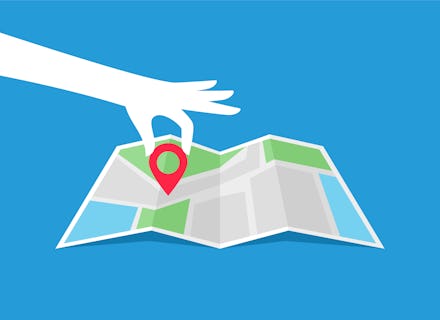How an artist tricked Google Maps with 99 phones and a little red wagon

Whether you're a walker, driver, biker, or rely on public transportation, Google Maps can not only help you figure out how to get somewhere, but how long it'll take. What if those estimates were completely wrong, though? In Germany, one artist says he made fake traffic jams on Google Maps through a surprisingly simple method.
Berlin-based Simon Weckert's art focuses on the digital world. Through his work, Weckert aims to "assess the value of technology, not in terms of actual utility, but from the perspective of future generations."
For his latest project, Weckert loaded 99 rented Android phones into a red wagon. By opening each phone to Google Maps and walking the streets of Berlin, Weckert created fake traffic jams. Thick red lines popped up on Google Maps even though there weren't really any cars on the road at all. In other words, Weckert hacked Google.
"99 smartphones are transported in a handcart to generate virtual traffic jam in Google Maps," Weckert tweeted. "Through this activity, it is possible to turn a green street red which has an impact in the physical world by navigating cars on another route!"
The purpose of the hack wasn't just to mess with Google. In addition to assessing technology, Weckert "wants to raise awareness of the privileged state in which people live within Western civilization and remind them of obligations attached to this privilege."
Part of that looks like showing people some of the "hidden layers" involved in tech or troubling dominant notions surrounding it. In this case, Weckert best summed up his hack with a quote from general semanticist Alfred Korzybski: "'The map is not the territory...but another version of reality.'"
“Data is always translated to what they might be presented. The images, lists, graphs, and maps that represent those data are all interpretations, and there is no such thing as neutral data," Weckert told Motherboard. "Data is always collected for a specific purpose, by a combination of people, technology, money, commerce, and government.”
You may think of Google Maps as simply a map. However, Weckert pointed out on his site that Google Maps makes "virtual changes to the real city". A number of apps are dependent on its interfaces, including Airbnb, rideshare apps like Uber, or even dating platforms such as Tinder.
In this way, Google Maps has a lot more influence over your life than what is immediately apparent. And although all maps are the "product of a combination of states of knowledge and states of power", Weckert wrote, Google's transformation of what a map can be means that "questions relating to power in the discourse of cartography have to be reformulated."
"Maps, which themselves are the product of a combination of states of knowledge and states of power, have an inscribed power dispositive," Weckert wrote. "Google’s simulation-based map and world models determine the actuality and perception of physical spaces and the development of action models."
Of course, there are always doubtful people out there, and not everyone believes that Weckert managed to trick Google. But Google tech lead and engineering manager for Google Maps Torrey Hoffman tweeted, "I work for Google maps and I know quite a bit about how this works. I believe this is possible."